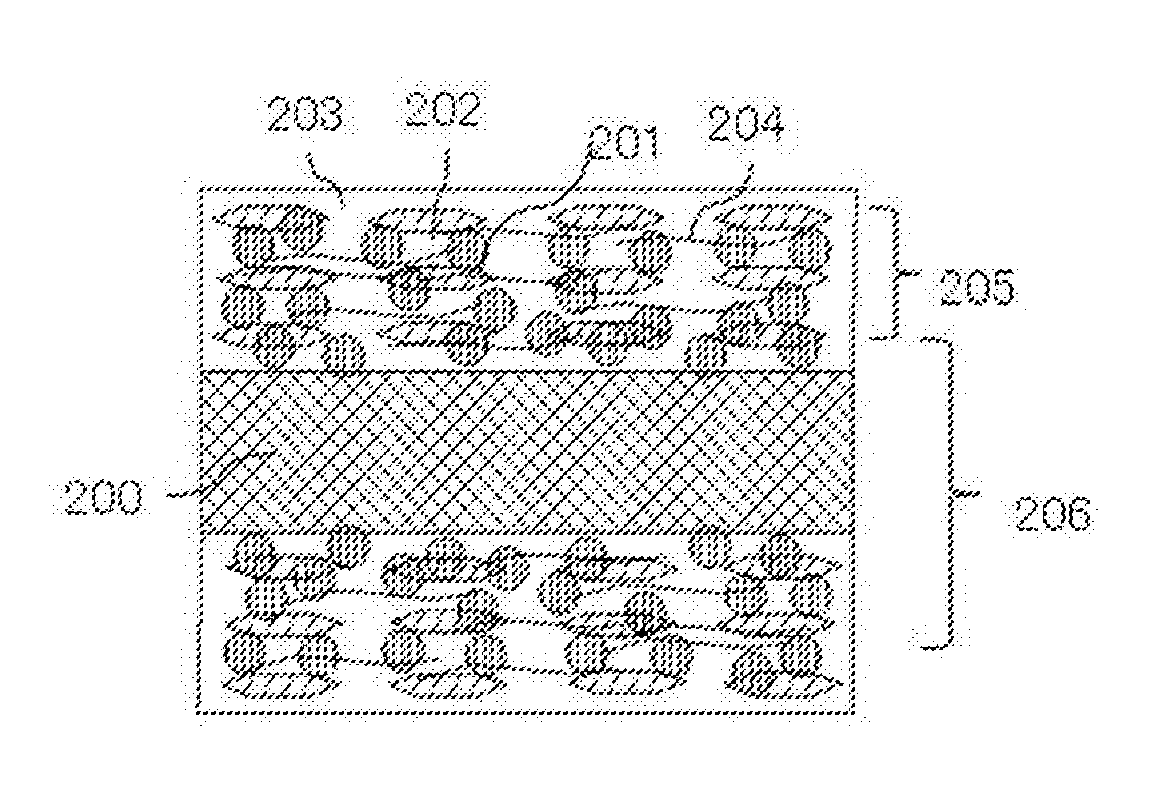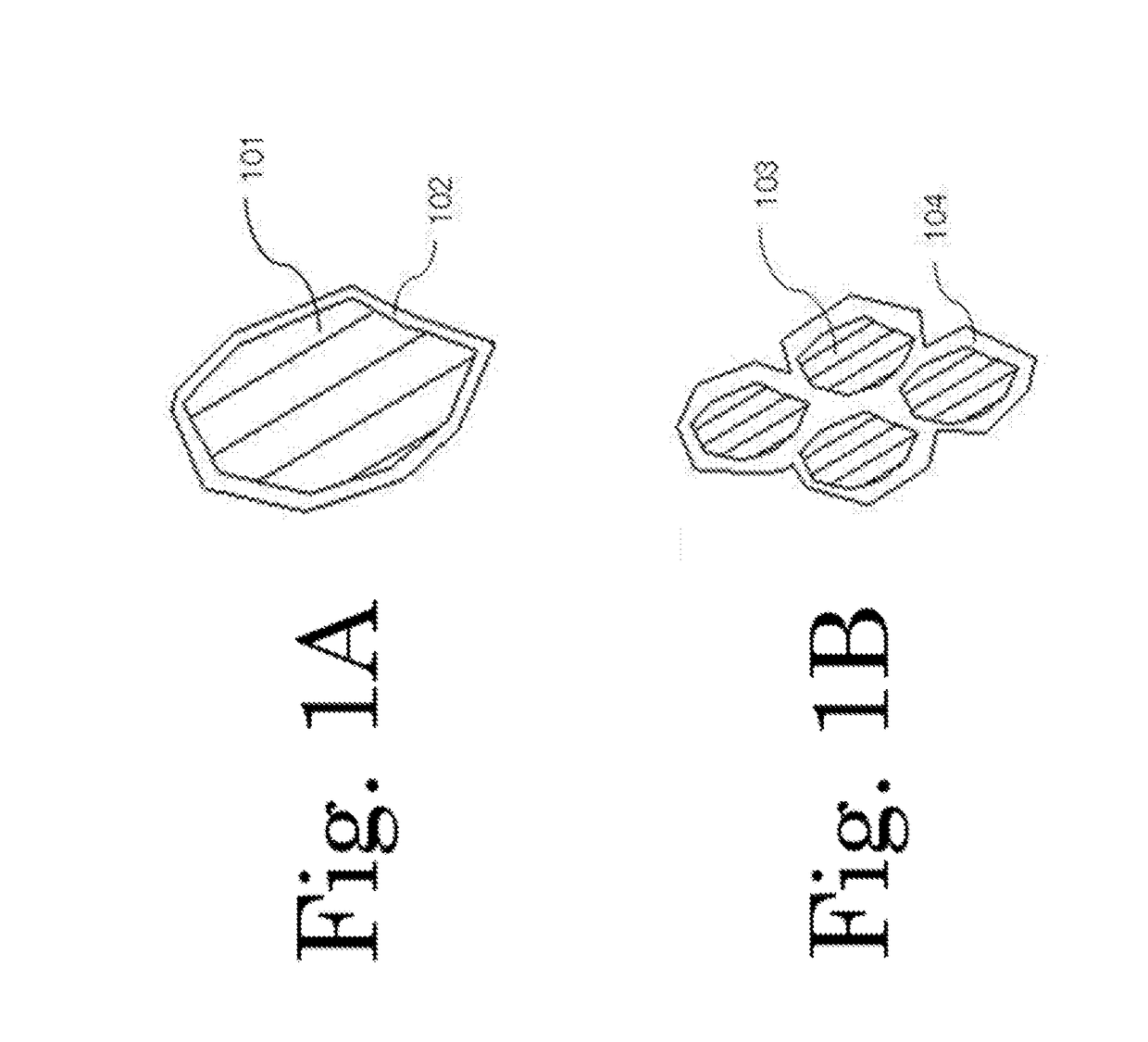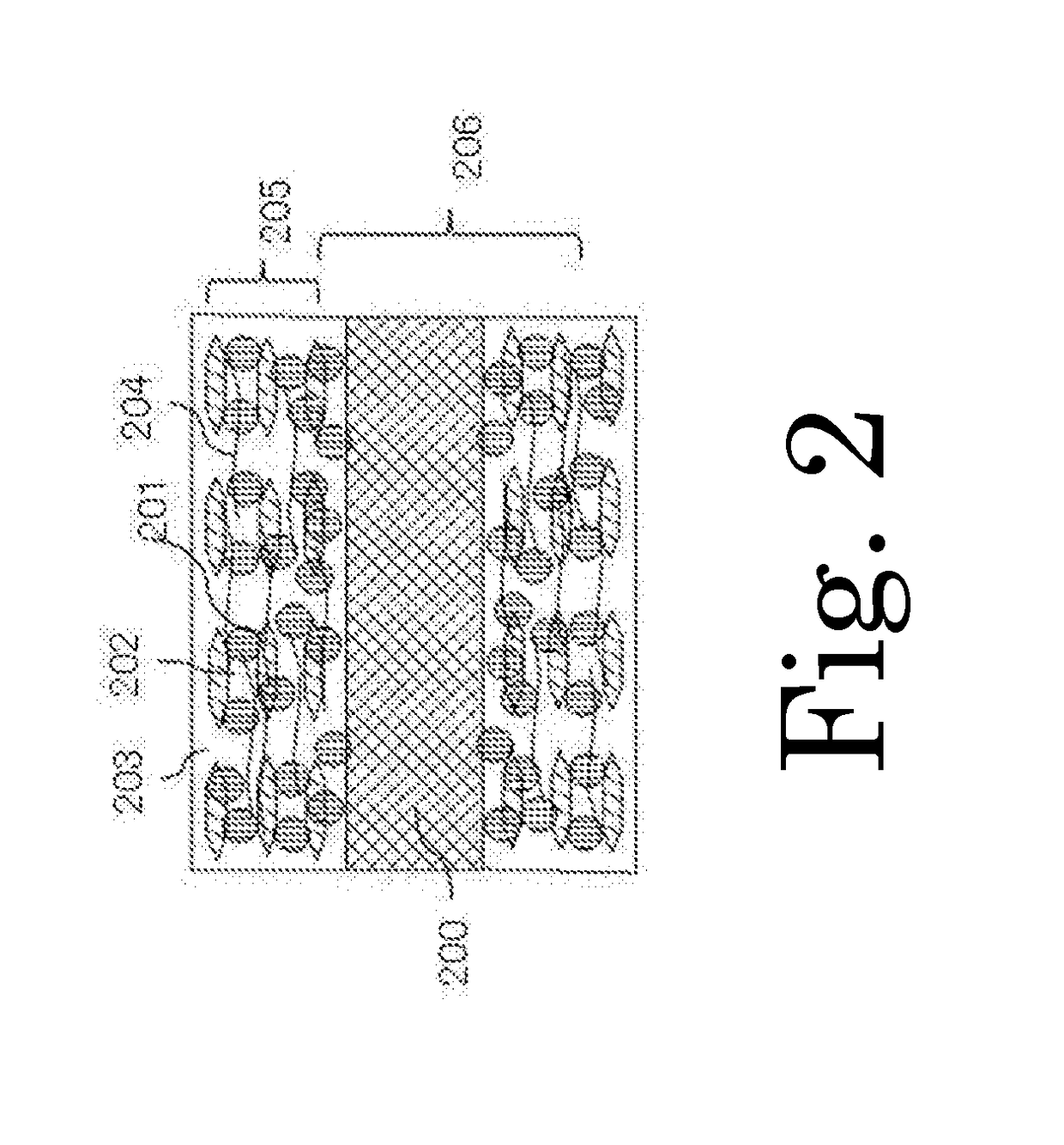Negative electrode material for power storage device, electrode structure, power storage device, and production method for each
a technology of power storage device and negative electrode, which is applied in the direction of electrochemical generators, cell components, transportation and packaging, etc., can solve the problems of insufficient discharge of electricity, difficulty in further increasing capacity, and the need for a new electrode material, etc., to achieve high initial lithium insertion/extraction efficiency, reduce the formation of sei layer, and store and release a large amount of lithium ions
- Summary
- Abstract
- Description
- Claims
- Application Information
AI Technical Summary
Benefits of technology
Problems solved by technology
Method used
Image
Examples
examples
[0092]Hereafter, the present invention will be described in more detail with reference to Examples.
Preparation of Anode Active Material for Energy Storage Devices Containing Silicon as Main Component
example m1
[0093]One part by weight of lithium citrate and 26.7 parts by weight of aluminum nitrate (9 hydrate) with respect to 100 parts by weight of silicon were added to a solution obtained by dispersing 10% by weight of metal silicon powder having a particle size of 10 μm or less in ethanol. Further, a small amount of polyethylene glycol was added to give a mixed solution. While circulating the resulting mixed solution, the raw-material silicon was milled using a first wet bead mill filled with zirconia beads having a particle size of 0.5 mm until the average particle size became 0.5 μm or less. Then, while circulating the resulting raw material, it was milled using a second wet bead mill filled with zirconia beads having a particle diameter of 0.03 mm until the average particle size became 100 nm or less, to give a milled dispersion slurry.
[0094]Then, the resulting milled dispersion slurry was spray-dried using a spray dryer in an atmosphere of a nitrogen gas at 150° C. to give powder. Th...
example m2
[0095]One hundred parts by weight of metal silicon powder having a particle size of 100 μm or less, 1.5 parts by weight of lithium hydroxide (1 hydrate), and 9.1 parts by weight of aluminum oxide were mixed using a high-speed planetary ball mill, milled using a vibrating mill for 10 h, and then heat-treated in an atmosphere of nitrogen at 800° C. for 30 min to give a lithium-aluminum composite oxide-coated silicon composite. Typically, when dry-pulverized silicon is extracted in the air, it needs to be gradually oxidized, since red hot occurs due to oxidation. On the other hand, the silicon powder of Example M2 could be extracted safely without having to gradually oxidize it, since the silicon powder was coated with the oxide.
PUM
 Login to View More
Login to View More Abstract
Description
Claims
Application Information
 Login to View More
Login to View More - R&D
- Intellectual Property
- Life Sciences
- Materials
- Tech Scout
- Unparalleled Data Quality
- Higher Quality Content
- 60% Fewer Hallucinations
Browse by: Latest US Patents, China's latest patents, Technical Efficacy Thesaurus, Application Domain, Technology Topic, Popular Technical Reports.
© 2025 PatSnap. All rights reserved.Legal|Privacy policy|Modern Slavery Act Transparency Statement|Sitemap|About US| Contact US: help@patsnap.com



